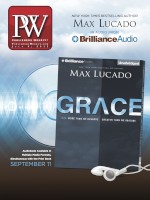In Master of the Mountain: Thomas Jefferson and His Slaves, Henry Wiencek presents startling evidence that Thomas Jefferson was bullish on slavery.
You provide details about uncovering the suppression of Jefferson’s papers and his calculation of a “silent profit” from slave births. Why was that important to do?
It builds trust when readers know where my information came from. Also, doing this kind of research rouses a powerful set of emotions—very disturbing emotions. I want to give readers a sense of my emotional reactions, without being manipulative. By leading them through my process, I hope they will respond as I did.
How did you proceed?
I delved into subsequent letters and found Jefferson’s advice to a neighbor to invest “every farthing” in slaves. No Jefferson scholar has ever quoted that. Maybe they didn’t see it—that’s quite possible—but the people who studied the founders didn’t care about slavery, so no one dug deeper. I really thought that everything about Jefferson had been turned up. It was like foundations were shaking. If you can’t trust the written records of the University of Virginia, what can you trust? I was truly stunned.
How do you think Jefferson historians will react to what you found?
A first response has come through back channels: “Well, but that’s just one thing.”
Do you agree?
The discovery of one new bit of information isn’t enough to change our views. But it was the beginning of a whole set of discoveries, which led me to believe that we have the wrong image of how slavery worked and how Jefferson felt about it. Scholars have never put money at the center of Jefferson’s thinking. Money—that’s the real, toxic subject. Slaves had become money; Jefferson used them that way. He wasn’t “stuck” in a system; he perpetuated slavery because it was profitable.
Why was it important to describe the physical layout of Monticello?
I grew up in Boston with a powerful sense of place. I didn’t go to the South until I was in my 30s, and I was struck by how the great plantation houses dominated the landscape. Slaves lived close to the owners, but economics and race kept them remote. Looking at the magnificent geometry of Monticello—a symbol of tremendous power—from Mulberry Row, a Hemings had to think, “I’m part of that family, but I’m not.”
Do you think we can change the way we talk about slavery?
Monticello does a fantastic job of showing aspects of slave life, conducting archeology and restoring the kitchen and Mulberry Row. But presenting slavery is still a great problem. The really ugly side is not talked about, but it is there in the records. I benefited from the publication over the past 20 years of new Jefferson papers, and the Internet makes a range of documents available that people couldn’t find before. So a new vision is taking shape, and we’re beginning to knock down the wall of willful forgetting.



 Volume 259
Issue 28
07/09/2012
Volume 259
Issue 28
07/09/2012





